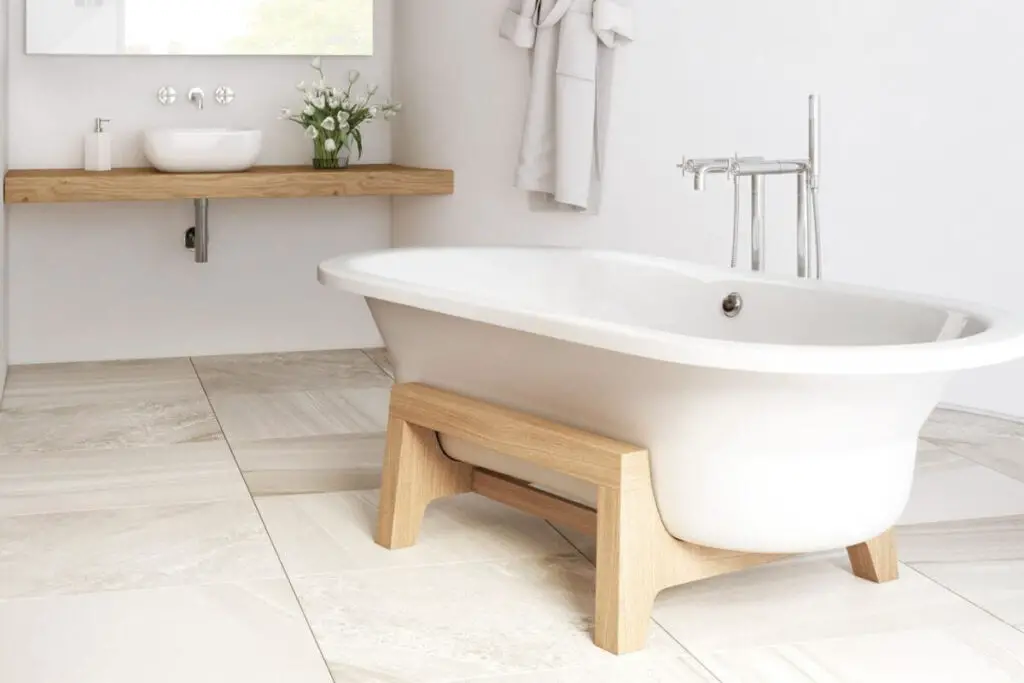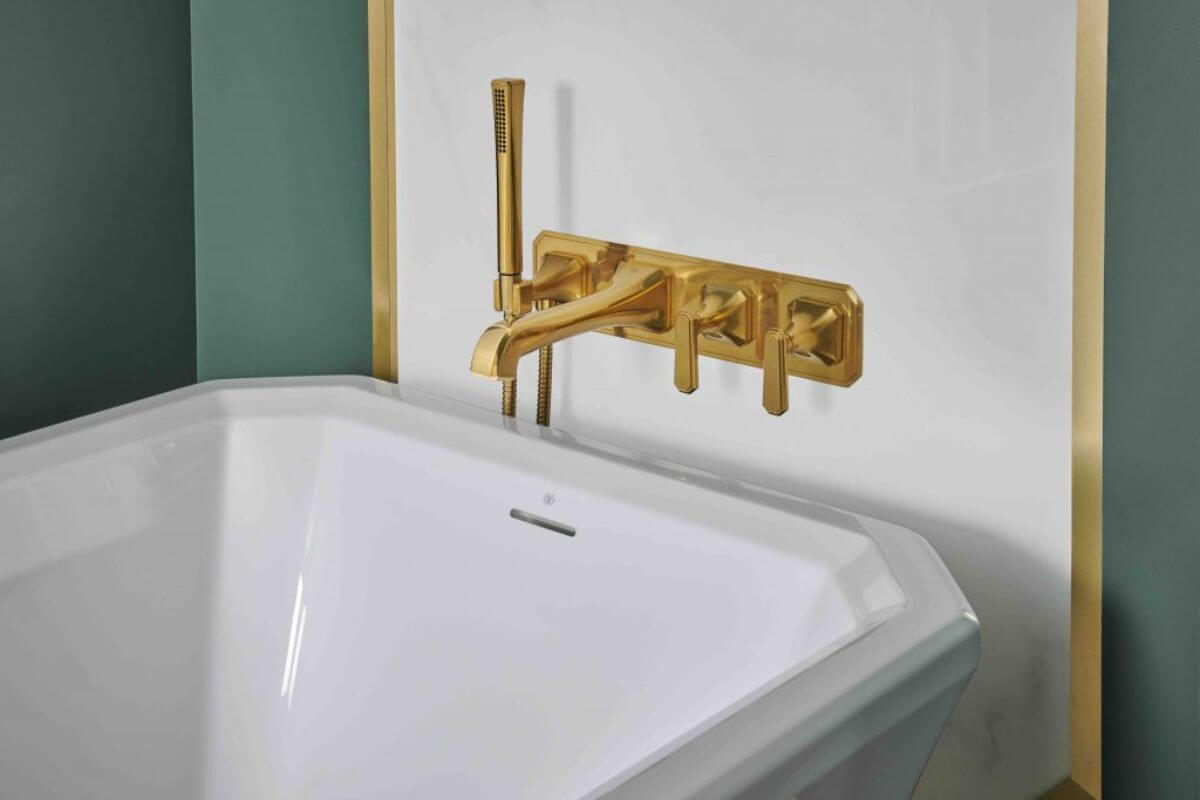A relaxing soak in a warm bath is one of life’s simple pleasures, providing a tranquil escape from the demands of the day. However, the age-old question remains: How long does it take to fill a bath? The answer may vary depending on several factors, and understanding these variables can help you make the most of your bathing experience. In this article, we’ll dive into the considerations that influence the time it takes to fill a bath and offer some tips for maximizing your bath-time bliss.
The Bathtub and Its Capacity
The first and most obvious factor that affects bath-filling time is the size of your bathtub and its water-holding capacity. Bathtubs come in various shapes and sizes, from compact and shallow ones to larger, deeper soaking tubs. The volume of water your tub can hold will directly impact how long it takes to fill it.
Standard Bathtubs:
A typical standard-sized bathtub, which can hold around 40-60 gallons (151-227 liters) of water, will take less time to fill than larger tubs.
Soaking Tubs:
Deeper soaking tubs, which are designed for a more immersive bathing experience, can hold significantly more water, often 70 gallons (265 liters) or more.
Corner Tubs and Whirlpool Tubs:
These tubs come in various sizes, but they generally require more water to reach an adequate depth for a comfortable soak.

Water Flow Rate
The flow rate of your water source plays a crucial role in determining how quickly your bathtub fills. Flow rate is typically measured in gallons per minute (GPM) or liters per minute (LPM). The higher the flow rate, the more water is delivered to your tub in a given time.
Standard Flow Rate:
In many homes, the standard flow rate for faucets and showerheads is around 2.5 GPM (9.5 LPM). If your bathtub faucet has this flow rate, it will take less time to fill your bath.
Low-Flow Fixtures:
Some homes have water-saving fixtures that reduce flow rates to around 1.5 GPM (5.7 LPM) or less. While environmentally friendly, these fixtures will take longer to fill your tub.
Water Pressure
Water pressure also affects how quickly your bathtub fills. Higher water pressure pushes water out of the faucet more forcefully, filling the tub faster.
Mains Water Pressure:
The water pressure in your area, determined by your water supply system, can vary. Locations with higher mains water pressure will fill the bath more rapidly.
Booster Pumps:
In some homes, booster pumps are installed to increase water pressure. If you have a booster pump, it can significantly reduce bath-filling time.
Temperature Preferences
The water temperature you desire for your bath can influence how long it takes to fill the tub. If you prefer a hotter bath, you may mix more hot water into the flow, which can slow down the filling process. Conversely, cooler baths that require less hot water will fill more quickly.
Filling Technique
Your filling technique can also impact the time it takes to fill the bath. For example, some people may start with hot water and then adjust the temperature as the tub fills. Others may fill the tub with cold water first and then add hot water.
Maximizing Your Bath Time
To make the most of your bath time, consider the following tips:
Optimize Water Flow:
If you have control over your water flow rate, choose a higher flow setting when filling the tub to reduce waiting time.
Prepare Ahead:
While the bath is filling, use this time to gather bath essentials, such as soap, a good book, or soothing music, so you can fully relax once in the tub.
Safety First:
Be cautious when adding hot water to adjust the temperature; hot water can cause burns. It’s best to mix hot and cold water gradually to reach your desired temperature.
Water Conservation:
If you’re conscious of water conservation, consider collecting the cold water that runs before hot water arrives in a bucket and repurpose it for other uses.
In Conclusion
The time it takes to fill a bath depends on several factors, including the size of your tub, the flow rate and pressure of your water source, and your temperature preferences. By understanding these variables and using them to your advantage, you can create the perfect bath-filling experience and make the most of your well-deserved moments of relaxation. After all, a bath is not just about the destination; it’s also about the journey to relaxation.
Soaking in Serenity: Enhancing Your Bath Experience
A bath is not merely a functional act of filling a tub with water; it’s an opportunity to indulge in self-care and embrace relaxation. Here are some additional considerations to help you enhance your bath experience:
Aromatherapy and Bath Additives
Elevate your bath with the addition of aromatherapy and bath additives. You can use bath salts, bath bombs, essential oils, or bubble bath solutions to create a sensory experience that soothes your mind and body. Lavender, chamomile, and eucalyptus are popular essential oils known for their relaxation benefits.
Lighting and Ambiance
Set the mood for your bath with the right lighting. Soft, warm lighting, such as candlelight or dimmed overhead lights, can create a cozy and calming atmosphere. Consider using scented candles to enhance the ambiance further.
Music and Entertainment
Prepare your favorite soothing music or an engaging audiobook to enjoy while in the bath. Music and entertainment can transport your mind to a place of serenity and mindfulness, making your bath more enjoyable.
Temperature Control
Ensure the water temperature is ideal for you. Test it with your hand or a bath thermometer to avoid discomfort. The water should be comfortably warm, but not scalding hot. Maintain the temperature throughout your bath by adding hot water as needed.
Timing Your Bath
Consider the time of day for your bath. Some people find a morning bath invigorating, while others prefer it as a calming evening ritual. It’s your personal time, so choose what aligns with your preferences.
Bath Tray or Caddy
A bath tray or caddy can hold your bath-time essentials, such as a book, a glass of wine, or your tablet for entertainment. It adds convenience and luxury to your bath experience.
Post-Bath Care
After your bath, take time for self-care. Wrap yourself in a soft, warm towel or robe, and moisturize your skin to lock in the hydration from the bath. This is an excellent opportunity to practice mindfulness and reflect on your day.
Frequency and Consistency
Enjoying a bath regularly can be a form of self-care and relaxation. Whether it’s a weekly ritual or a daily indulgence, the more consistent you are with your bath routine, the better you’ll become at maximizing your relaxation.
Experiment and Personalize
Your bath experience is unique to you. Experiment with different bath additives, scents, and techniques to discover what brings you the most joy and relaxation. Personalize your bath routine to fit your preferences.
Disconnect and Unwind
Consider your bath time as a sacred period to disconnect from the demands of the day. Turn off your phone or set it to silent, and create a bubble of relaxation where you can unwind fully.
In conclusion, the time it takes to fill a bath can vary based on several factors, but the journey to relaxation begins the moment you decide to take one. By considering your tub’s size, water flow rate, and personal preferences, you can optimize your bath-filling process. The time spent preparing for your bath, customizing it with your favorite elements, and practicing self-care will make every minute worthwhile. Remember that your bath is not just about how long it takes to fill; it’s about the quality of the experience and the serenity it brings to your life.
FAQS
Certainly, here are some frequently asked questions (FAQs) about filling a bath and making the most of your bath experience:
How long does it typically take to fill a standard-sized bath?
The time it takes to fill a standard-sized bath can vary, but with a typical flow rate of 2.5 GPM (gallons per minute), it might take around 15-20 minutes to fill a standard bathtub with a 40-60-gallon capacity.
Can I reduce bath-filling time with a high-flow faucet or fixture?
Yes, a higher flow rate faucet or fixture can fill the bath more quickly. Using fixtures with a flow rate of 2.5 GPM or higher will expedite the process.
Are there ways to save water when filling a bath?
To conserve water, you can collect cold water while waiting for hot water to reach the faucet and repurpose it for other uses, such as watering plants.
What are the benefits of aromatherapy in the bath?
Aromatherapy in the bath can promote relaxation and stress relief. Essential oils like lavender, chamomile, and eucalyptus are known for their calming effects.
Is it safe to use candles in the bathroom during a bath?
Candles can create a serene atmosphere, but it’s essential to exercise caution. Keep candles away from water, use stable candle holders, and never leave them unattended.
What’s the ideal water temperature for a relaxing bath?
The ideal water temperature for a relaxing bath is around 98-100°F (37-38°C). It should be warm and soothing but not too hot to avoid discomfort or skin irritation.
How can I ensure a consistent water temperature throughout my bath?
To maintain a consistent water temperature, you can add hot water as needed. It’s advisable to keep a source of hot water nearby to make adjustments without leaving the bath.
Are there any safety precautions I should take in the bath?
To ensure safety, test the water temperature before getting in to avoid burns. Additionally, ensure that the bathroom floor is dry to prevent slipping.
What is the best time of day for a relaxing bath?
The best time for a relaxing bath can vary from person to person. Some find a morning bath invigorating, while others prefer it as an evening wind-down. Choose a time that aligns with your preferences and schedule.
How often should I take a bath to benefit from relaxation and self-care?
The frequency of bath-taking is a personal choice. Some people enjoy a weekly bath ritual, while others indulge in a daily relaxation practice. Find a frequency that works best for you.
Can I add bath salts and essential oils to a bath for relaxation?
Yes, bath salts and essential oils can enhance the relaxation of your bath. They can promote a calming and soothing atmosphere, creating a spa-like experience.
What should I do after a bath to maximize the benefits of relaxation?
After your bath, take time for post-bath care. Moisturize your skin, wrap yourself in a warm towel or robe, and engage in mindfulness to extend the relaxation.
Bathing is a cherished ritual that can be tailored to your preferences, providing moments of relaxation and self-care. These FAQs aim to offer insights into making the most of your bath experience and ensuring your safety and well-being during the process.



